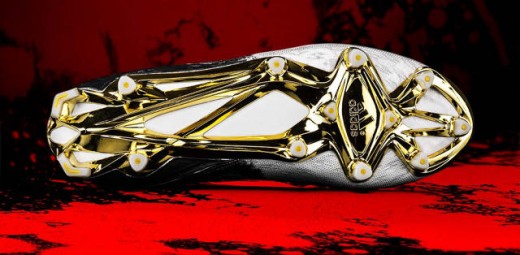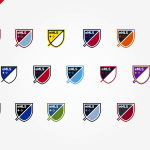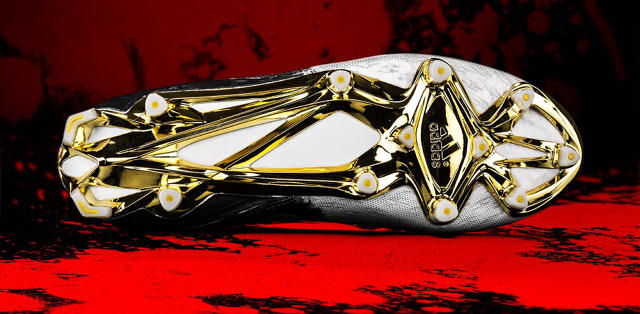How Adidas Is Learning To Be More Like Kanye
The new Adidas doesn’t care if it’s polarizing. It just doesn’t want to be neutral anymore.
Brash. Opinionated. Egotistical. Atonal. Polarizing. Irresistible. It’s how people describe Kanye West. It’s also how you’d describe American culture.

And Adidas, the German-run athletic wear company known for its bland European appeal, is refocusing its efforts through the lens of all things American. For good reason: Between 2013 and 2014, Adidas lost a frightening 7% of the U.S. marketshare. In the past year, Adidas has shown off a mega-hyped new line of apparel in conjunction with West, and has poached three top designers from Nike here in the U.S. (Nike later sued those designers in a dramatic lawsuit alleging intellectual property theft.) Adidas has also made some quieter changes, migrating its central design hub from the sleepy town of Herzogenaurach, Germany, to hip Portland, Oregon, a mecca of sneaker culture, and restructuring its studios to give designers more autonomy to chase trends that set the stage for the company’s next act. In short, Adidas wants to be less Karim Benzema, more Kanye West.
“The biggest thing for me is that [consumers] will have to make a conscious decision that they’re part of this brand,” says Brian Foresta, head of basketball design at Adidas. “There will be that division, that you are an individual and stand out, or you are part of an older regime of a brand that’s bloated and falling apart.”
A New Leader
In a call with investors last March, Adidas CEO Herbert Hainer appeased nervous shareholders with a futuristic vision of the company. Adidas would give up on winning marketshare across the whole globe, and instead focus its efforts in the world’s most populous and influential cities. News centers would be set up in each to track trends, and stores would be set up with robotic manufacturing on site, so that customers could produce custom shoes right in front of their eyes.
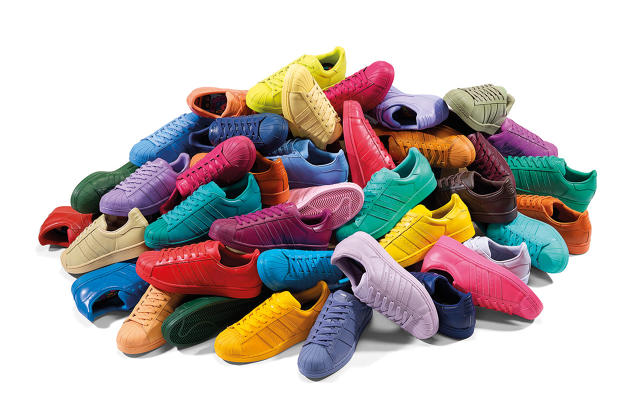
At the heart of this plan sits Paul Gaudio, the company’s 10-month-old global creative director. A industrial designer by trade who was born in Pittsburgh, Gaudio has either worked at or consulted for Adidas for the past 23 years. He moved to Germany in 2007 to take over as head of strategy. In 2011, he took over digital sports. And last year, he returned to Portland where he’s consolidating the direction of Adidas design.
“My personal feelings, being an American and having spent lots of time working professionally in this market, it’s really where things start,” Gaudio tells Co.Design. “I hate to say we’ve discovered this, but what we’ve committed to here is shaping more of our global product offering through the lens of American culture.” Which makes sense. America is the birthplace of most modern pro sports. Just like Hollywood films and the Billboard Top 40, basketball, baseball, and football are all American exports that influence tastes internationally.
An Aggressive Reorganization
But to capture American culture in their product, Gaudio would need to reorganize Adidas to function more like an American, design-led company. In his short tenure, Gaudio has neither cleaned house, nor gone on a hiring binge. And in fact, most of his creative directors have been with the company for seven to 10 years. But he has consolidated the heads of every major product category under one roof that’s just an 11-mile jog from Nike’s headquarters.

“In the past, we took the global range from Germany, and [then] we built products for the U.S. consumer—or for a retailer [even],” explains Katie Becker, senior design director of training and sportswear. “Now, it’s consumer-focused. You don’t have to go to a meeting and get trumped because the retailer says [something different].” In essence, the U.S. consumer was an afterthought, an archetype constructed by people in Germany, or suggested by retailers who would carry Adidas product. Now, American Adidas designers are designing directly for the U.S. consumer first. The hope goes that those designs will resonate through Adidas’s global collection.
Gaudio has restructured Adidas design, which had formerly divided design, marketing, and business as separate entities, into self-contained verticals. Now, teams for American football, basketball, and running, for instance, are all organized into their own autonomous silos. Silos share technology, materials, retail plans, and a general direction with each other, but under the new structure, design, business planners, and marketers work together, churning out their own products faster and with less bureaucratic review. “It’s a philosophical view,’ Gaudio explains. “Let’s give the teams context, a clear direction and strategy, and turn them loose. Let them go. That’s a different approach than the way we’ve been doing business over the last 20 years.”
Adidas wants to be able to react to trends as they hit, especially for items that spike in sales just once a year (baseball players, for instance, buy cleats at the start of a season). In this sense, Adidas’s new model more closely resembles that of fast fashion than traditional athletic wear. Think of mega successful chains like Zara and H&M that churn out new clothing, from drafting table to factory to store shelves, in a matter of weeks.
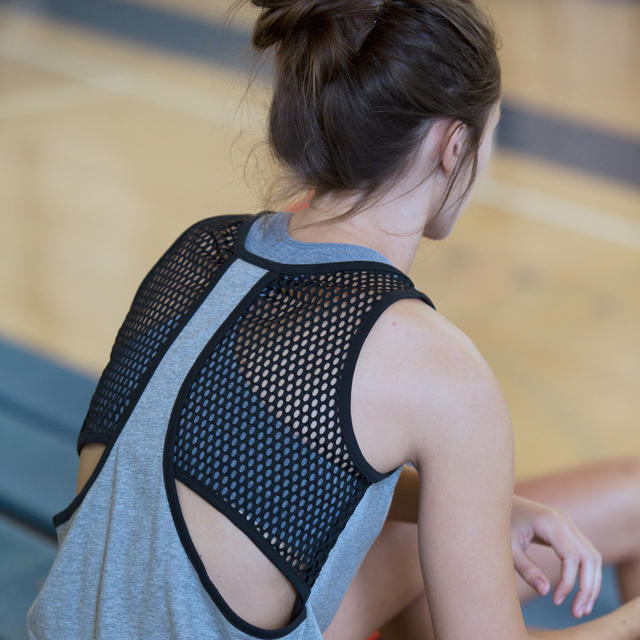
In Becker’s case, the restructuring allowed her to bring an entire new line of clothing to market in record time. She had an insight, that female high school athletes tend to have very particular needs for clothing—regulations mandate that items like shorts have to be a certain length—but no one was really producing those items in high-tech performance materials, she says. So she came up with a line for 13- to 17-year-old girls, created three waves of prototypes in six weeks, and pitched the idea to Dick’s Sporting Goods. It will be on shelves this July. Under the old regime, it would still be a concept under the scrutiny of intercontinental middle management. “I think speed is the name of the game right now,” Foresta says. “No one wants to admit it, but I’ll say it. Fast fashion has changed what it means when you compete in the mall [and online].”
Not Making The Same Mistake Twice
There’s a great piece of trivia you’ve probably never heard. Michael Jordan approached Adidas before going to Nike. The German execs wanted a tall center, not a guard, so they passed. Decades later, the Jordan brand is still the top seller in U.S. basketball shoes—commanding 58% of the market.
Avoiding this sort of corporate faux-pas is what Adidas’s U.S. reorganization is all about. “I think, for sure, this is the birthplace of our industry, and the birthplace of the sport entertainer culture we’ve grown up in. I think for sure America exports more [than any other country] in terms of those cultural influences,” Gaudio says. “In the case of something like basketball, American football, those are heartbeat sports for the U.S. market. Basketball is getting more globally relevant in China, but it’s a U.S. sport…[so the U.S. shapes the] fundamental point of view.”

This fall, Adidas will open a design studio in Brooklyn to be headed by those three ex-Nike designers. What Adidas’s Portland studio might be capturing in terms of sports culture, the Brooklyn studio will capture in terms of fashion and art culture. In fact, a spokesperson calls it the “contact point of the most influential city in the U.S.” At the Brooklyn studio, Adidas won’t just invite celebrities like Kanye or Derek Rose to collaborate on new designs, it’ll host community kids, college students, and artists in informal visits, internships, and artist-in-residence programs. Some collaborations will be fun explorations, others will become commercial products.
Can Adidas restructure itself to become fast, relevant, and cool? It’s too early to say. But one thing’s for sure: The company is positioning its designers to make bolder statements, to stop boring you and start impressing you, offending you, or just making you look.
“I think, as consumers and as people, we respond to things we feel people’s fingerprints on, you feel personalities, the edges are just a bit sharper, and you have to make a decision if you invest in what that brand stands for or it’s not for you,” Foresta says. “I feel like we’ve homogenized that too much. Nothing’s worse than being a default decision.”
Fast Company , Read Full Story
(248)

